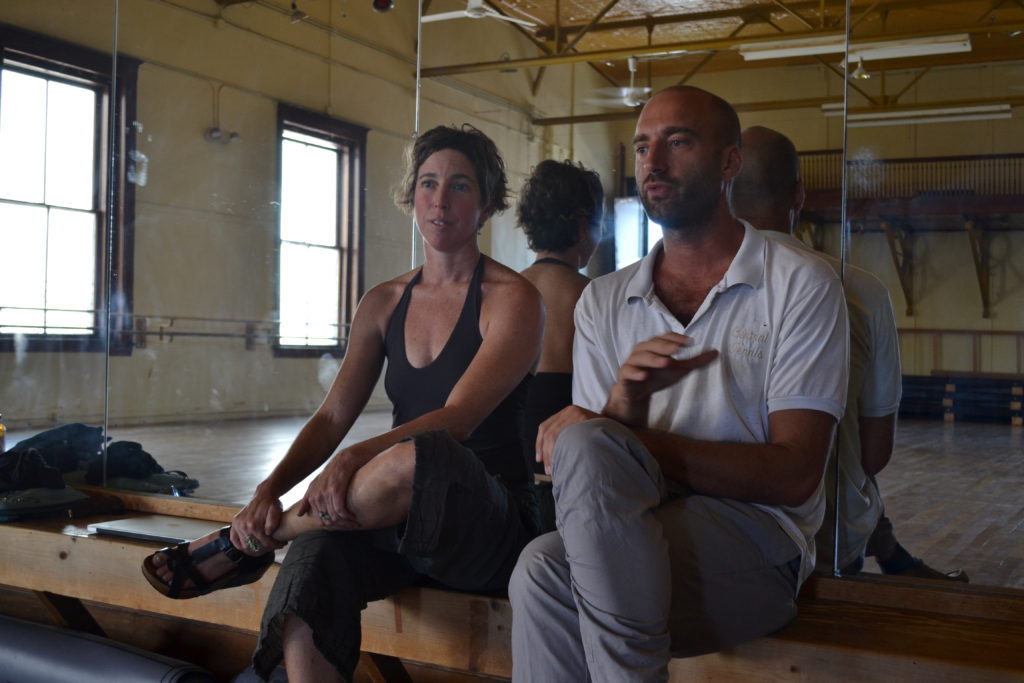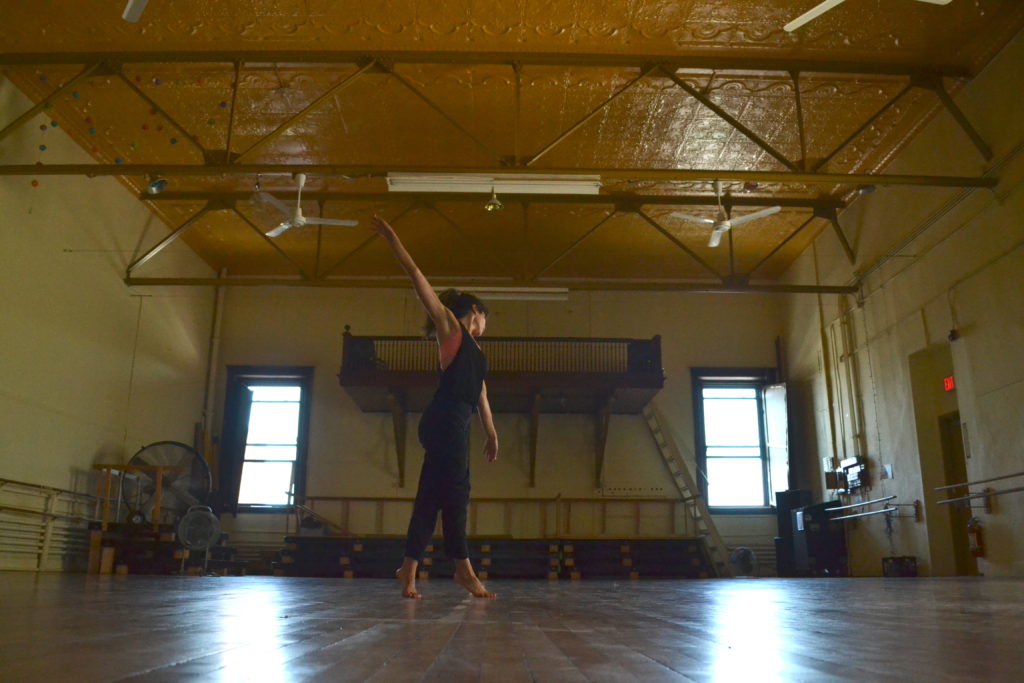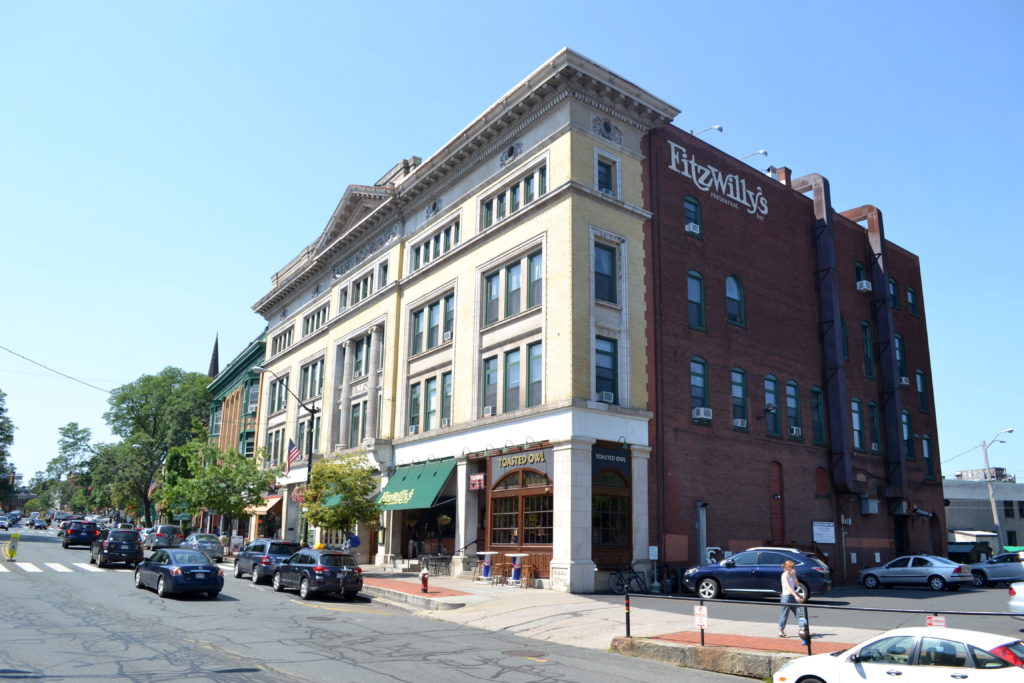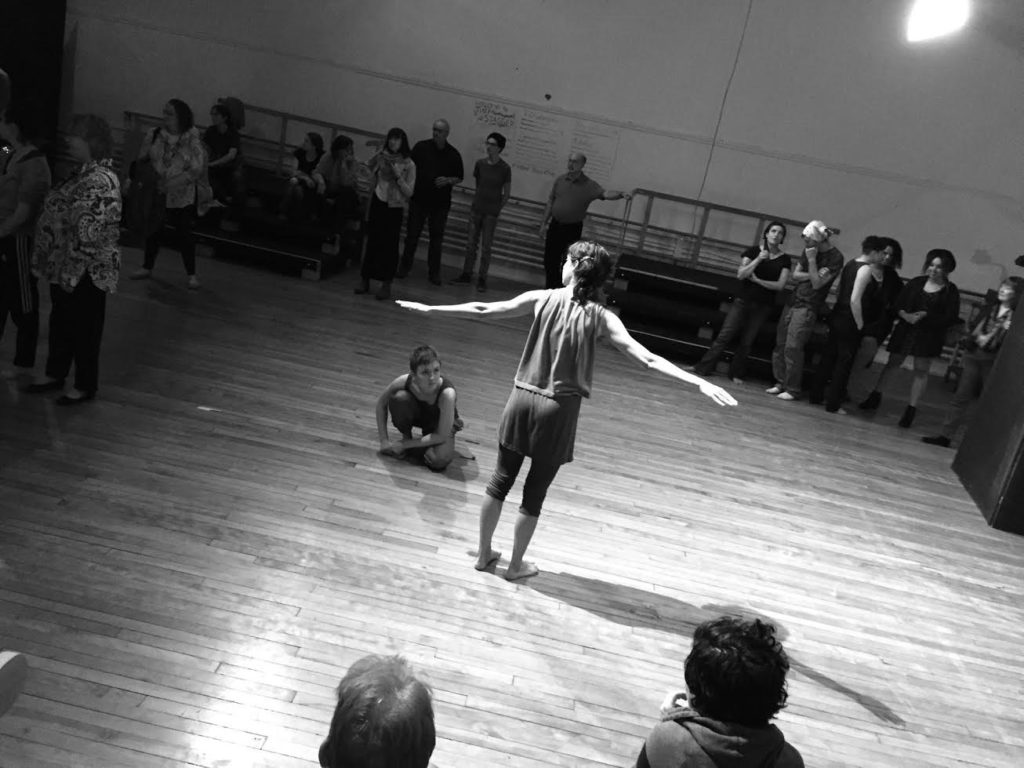Downtown Northampton’s biggest — and possibly last — public performing arts space is a real beauty: a 4,000 square foot, high-ceilinged room where local Freemasons used to hold community gatherings over a century ago. Completed in 1898, it takes up much of the fourth floor of the Masonic Block at 25 Main St., the same building that houses Fitzwilly’s restaurant.
Since the mid-’80s, when Anthony De Vecchi and his Northeast American School of Dance moved in, it has served as a well-used rehearsal and performance space for artists based here and around the world, of all ages and skill levels. But recently, its future has proved uncertain.
Last fall, De Vecchi faced a civil suit from his landlords, the Chamisa Corporation, who claimed that his current lease — an agreement drawn up in 1986 with a former landlord that provided, effectively, for rent control — was invalid.
Pressed for the money and time to push back on the possibility of eviction, De Vecchi partnered with local dancer and choreographer Jen Polins, co-founder of the School for Contemporary Dance and Thought (SCDT). Over the past year, Polins has been managing the lease and running her school’s programming in the space. Now, after months of negotiations, Polins says that the new proposed lease agreement — which is still under discussion — appears to be sustainable.
“It will be an adjustment to our community, but still at a price that might work,” she says, adding that her rent would rise by 40 percent over the next two years. “The problem with dance and performance is that it needs large empty space … so rent is still low, but the square footage bumps my rent up.”
Details are still being ironed out, and Chamisa Corp did not respond to request for comment. But SCDT — a school that attracts roughly 400 dancers each week, with plans to expand classes — seems poised to stay for now. It would be a victory for local performing artists of all stripes in need of a place to learn, practice, and collaborate.
But it also serves as a stark reminder that the Northampton of previous decades, which saw an influx of artists drawn to the city for its large spaces with low downtown rents, is gone.
De Vecchi’s lease, Polins admits, was antiquated. On the other hand, she says, “we are another victim of gentrification right now, and that’s what we’re fighting. We’re fighting a utopic battle to keep the arts in downtown Northampton, instead of on the outskirts.”
Public practice and rehearsal space for artists in Northampton has proved difficult to find in recent years. In the summer of 2013, the Northampton Center for the Arts vacated its home at 17 New South St., which for three decades housed a large ballroom and open gallery space. The top floor of Thornes Marketplace, long run as an arts incubator, is now private business. The Thornes basement space formerly occupied by Dynamite Records was available to artists for several years while vacant, but became the ConVino wine bar in 2014. Wild Life Sanctuary Studio, a small but popular arts and education space in Florence, closed last year.
Inevitably, new art spaces will open their doors. The Northampton Arts Trust is moving toward completion of its $5 million rebuilding project at 33 Hawley St. — an arts, culture, and education center which will become the new home of the Center for the Arts. And of course, the city retains high-profile venues like the Academy of Music, which do much to showcase the arts.
But presenting venues, with rare exception, are in the business of selling tickets to performances that are done, polished, and ready for show time. Rehearsal and workshop space — where artists can form new ideas and create new pieces from the ground up — is something entirely different.
“At this point, it’s basically this space and Hawley Street,” Polins says. “That’s it.” Which is why, she explains, this enormous fourth-floor dancehall is nearly always full-up with classes and events run by SCDT or one of its affiliate companies, like the Duffy Academy of Irish Dance or West African Dance and Drum.
Jake Meginsky, a musical accompanist for the five colleges, says that the SCDT space holds a special place in his heart because “it’s artist-run, from the ground up. It’s a space that’s alive within the artistic community, and that distinguishes it from the institutions. I think a space like this was sorely needed.”
Artist Sheila Siragusa, a freelance director and adjunct theater lecturer, describes Northampton’s lack of performing arts space as “really prohibitive.”
“I came here was because there was space here to create new work, and a community that would really support it,” she says. Siragusa moved to the Valley from New York City and co-founded the Ko Festival of Performance in Amherst, which celebrated its 25th anniversary this summer.
She describes her own situation as “very lucky,” since her academic commitments at the Five Colleges have typically afforded her room to rehearse in campus spaces. But finding ways to rehearse downtown, where the process of art-making itself is not hidden away from the public eye, is her ultimate goal.
Siragusa cites an example from 2012, in which her troupe August Company collaborated with Gordon Thorne and Lisa Thompson, the executive and associate directors of the A.P.E. Ltd. Gallery on Main Street, to rehearse and perform Shakespeare’s Twelfth Night. “We had the doors open all week during our final rehearsals,” she says, “and on some days we had full audiences, just made up of people walking in off the street.
“People in Northampton are enthusiastic about seeing performance,” she says. “They loved it. They wanted to talk with us afterward. It was a big deal for us. The community’s arms are open and ready.”
Actor and director Jeannine Haas, who runs the theater company Pauline Productions, agrees that room for the arts is a much-needed commodity. “Not only is there a dearth of affordable rehearsal places,” she says, “there are no performance venues for theater that are not owned by colleges.”
Her company will soon be mounting a show at the Parlor Room on Masonic Street, on the small concert stage run by Signature Sounds. “We are extremely grateful for that,” she says, because “there are no other venues unless you jump us to 826 seats at the Academy of Music, which is beyond the budget and practicality of a small theater company.” Rooms and spaces donated by friends and supporters of the arts, she adds, always go a long way toward enabling new work.
Sometimes, dance and theater groups rehearse and perform in living rooms, in backyards, in the streets, and in abandoned spaces. It’s great for the public to spot those happenings, Polins at SCDT says, but it creates a misconception as well: that artists can simply “make it work” anywhere. “People see us perform in an empty storefront, and they assume that we don’t really need space,” she says. “But they don’t know how much sweeping and dusting the dancers have to do, and which one will go home with glass in their foot.”
All the more reason for SCDT to be doubling down on new programming, in hopes of drawing more students to 25 Main Street. The WIP series, or “works in progress,” presents developing pieces. The Hatchery provides young dancers aged 13 to 19 with pre-professional training. Polins and Meginsky have also co-founded a monthly event called HUT, which highlights regional artists in genres like dance, music, and spoken word.
“There’s really fertile activity here, in a lot of disciplines, that doesn’t make it into local presentations,” Meginsky says. “It’s where the work actually gets done, and it connects different groups who work really hard, but I don’t think most of that work finds its way out so that someone who isn’t ‘in the know’ has access to it.”
“We get people coming in now who feel excited to see something new,” he adds. “They show up to be entertained, but also to change their perception, or have an experience they haven’t had before. That’s our job — to make that space safe but also challenging and exciting. I just want to keep at that work.”
Contact Hunter Styles at hstyles@valleyadvocate.com.







